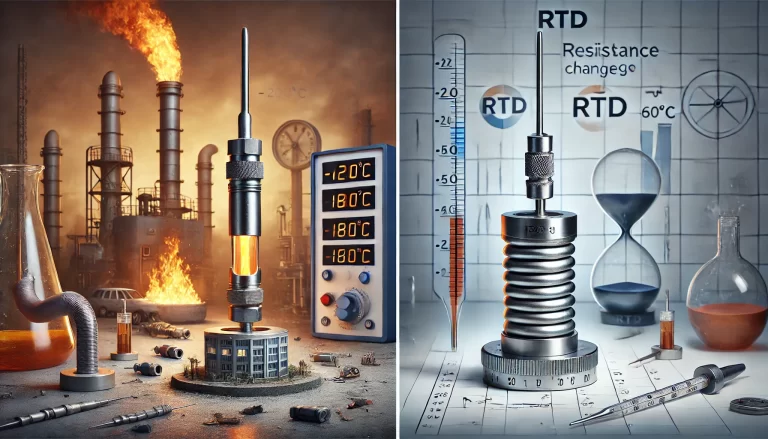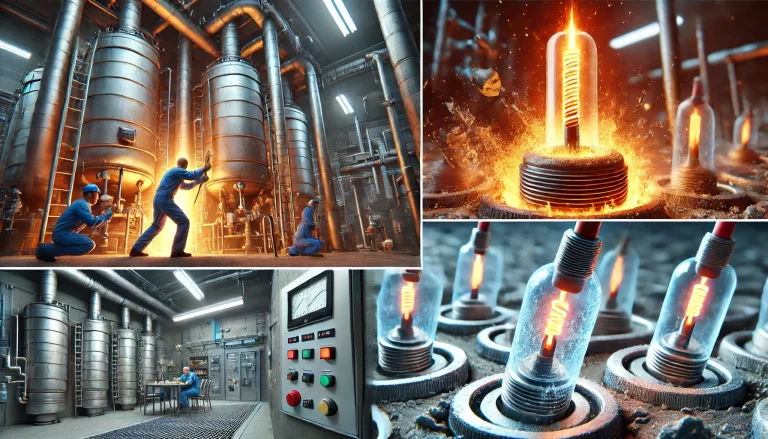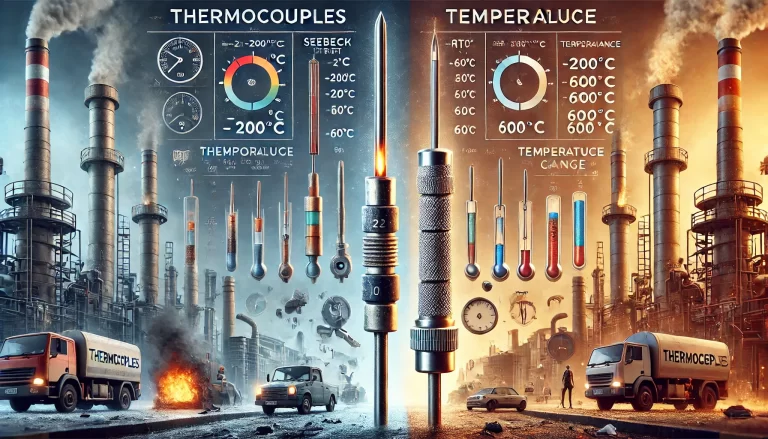Thermocouples are widely used in industrial temperature measurement due to their broad range, durability, and ease of use. Selecting the appropriate thermocouple requires a clear understanding of the measurement environment, temperature range, and application-specific requirements. This article outlines the key factors to consider when choosing a thermocouple, including temperature range, ambient atmosphere, wire diameter, and special use cases.

1. Thermocouple Type vs. Temperature Range
The operating temperature is a primary factor in selecting the thermocouple type. Different types of thermocouples offer varying thermal stability and material characteristics:
Type K (Nickel-Chromium / Nickel-Alumel): Suitable for temperatures below 1000°C. Widely used in general industrial applications.
Type N (Nicrosil / Nisil): Suitable up to 1300°C. Offers better stability and oxidation resistance than Type K.
Type T (Copper / Constantan): Ideal for low temperatures (-200°C to 300°C). Highly accurate among base metal thermocouples.
Type E (Chromel / Constantan): Offers the highest thermoelectric sensitivity among base metal types.
Type S and Type R (Platinum-Rhodium): Best for high-temperature applications between 1000°C and 1400°C. Type S is more common in industrial use.
Type B (Platinum-Rhodium): Suitable for very high temperatures between 1400°C and 1600°C.
Tungsten-Rhenium Thermocouples: Typically used when temperatures exceed 1600°C.
Note: Always refer to manufacturer-specific data for exact temperature limits.

2. Ambient Atmosphere Consideration
The chemical nature of the surrounding atmosphere affects thermocouple performance and longevity:
Oxidizing Atmospheres (<1300°C): Type K and Type N are preferred for their superior oxidation resistance among base metal thermocouples.
Oxidizing Atmospheres (>1300°C): Use noble metal thermocouples such as Type S or Type B.
Reducing or Vacuum Atmospheres (<950°C): Type J thermocouples can be used. They are versatile for both oxidizing and reducing conditions.
High-Temperature Reducing Atmospheres: Tungsten-Rhenium thermocouples are preferred.
3. Thermocouple Wire Diameter and Length
The size and length of thermocouple wires influence response time, durability, and circuit resistance:
Thick Wires (Φ2.5 mm or Φ3.2 mm): Improve durability and extend service life but increase thermal inertia and slow down response time.
Thin Wires: Faster response time and better sensitivity, but higher electrical resistance and shorter service life. Common for Type S where standard wire is Φ0.5 mm.
The required insertion length depends on the equipment design and measurement location. Proper depth ensures accurate readings, especially in large vessels or reactors.
4. Special Application Considerations
For specialized environments, thermocouple selection should be tailored to specific operational needs:
Nuclear Applications: Use molybdenum-based double-platinum thermocouples with low neutron capture cross-section.
Highly Corrosive Environments: Select thermocouples with protective sheaths or inert materials.
High-vibration Areas: Prefer ruggedized designs with reinforced junctions and shielding.

Conclusion
Choosing the right thermocouple requires a comprehensive understanding of the measurement conditions, temperature range, atmosphere, and application needs. By evaluating these factors systematically, engineers can ensure accurate and reliable temperature measurement in diverse industrial environments.
Tip: Consult IEC 60584 standards or your supplier’s technical documentation for compatibility, calibration class, and material selection.
